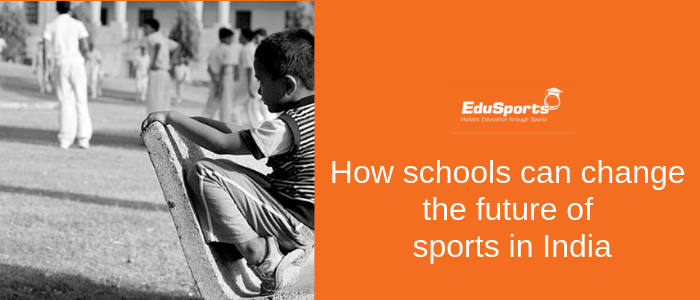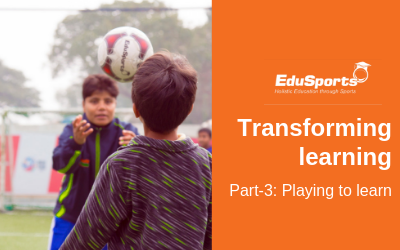“To succeed is to have failed” – learning from failures

How schools can change the future of sports in India
How schools can change the future of sports in India Where do children play?
Everyone seems to agree that children should play, and that more children should play as often as possible. However, the problem is not “Why should children play?” The real problem is “Where?”
With increasing urbanization, open spaces are disappearing in cities as well as smaller towns. Also, with increasing traffic congestion, the commute time for parents and children is a hassle. Children spend an hour travelling to-and-from the sports venue. In addition, the parent must arrange transport or drive the child and wait around while the child plays. Most parents do not have such a luxury of time or resources.
Therefore, due to a combination of disappearing open spaces/playgrounds near our homes and the hassles involved in commute, children are not playing as much as they used to a generation ago. This has contributed to significant increase in obesity levels, mental disorders and lack of social skills amongst children.
However, there is a clear solution. Schools present the scalable and sustainable solution for getting children to play. Schools can solve these problems by making sports an integral part of education.
Aggregation of children:
Every class has 25-50 children of a similar age, height and weight category and they show up every day, throughout the year. No separate transport logistics need to be managed or ongoing marketing needs to be in place to ensure children show up. There is a Physical Education timetable that runs round the year.
Synchronization of children:
Physical Education (PE) & Sports is mandatory in all schools (though it is often followed merely in letter than in spirit). So, all the children in a class come out at the same time during their PE/Sports period.
Space:
Most schools do have some space for children to play. Programs can be structured and designed to make effective use of limited time and space.
Fees:
Sports and PE is an integral part of Education. Parents pay fees and the fees cover PE and Sports for all children, along with other studies. Parents expect their child to be taught Physical Education and Sports with the same structure, rigour, individual assessment, daily lesson plans and by a trained teacher – just as they would for Math or Science. The budgets have to keep these factors in mind.
Not only budgets, but also space and time has to be aligned based on the number of students in school. With all the resources at hand, it is only sensible for schools to make sports compulsory and run it efficiently.
Lack of Space:
Lack of space in schools is often touted as a reason for not conducting the in-school PE/Sports program. However, most PE/Sports programs for children can be covered in a basketball court-sized space.
Adults make a common mistake of confusing sports with match play and visualise large grounds when they think of sport. However, if you analyse a professional sports team’s practice calendar, you will find that they spend time on three aspects: fitness, skills and match play. They spend 80% of their time on developing fitness and skills required to play the game better. For this, they use a small corner of the ground, never the whole field. If professional teams can work with small spaces, why can’t we get our children to play in schools?
A structured sports education program ensures the best use of the limited space and time available in a school. As parents and responsible citizens, we need to demand more from our children’s in-school Physical Education & Sports Program so that children get the benefit of the fees paid to the schools.
Sports need to be made compulsory in schools, just like Mathematics or Science. Sports is Education.

Parminder Gill, Co-Founder & Head of Business, EduSports (This Blog is originally published in www.jaagore.com.)







